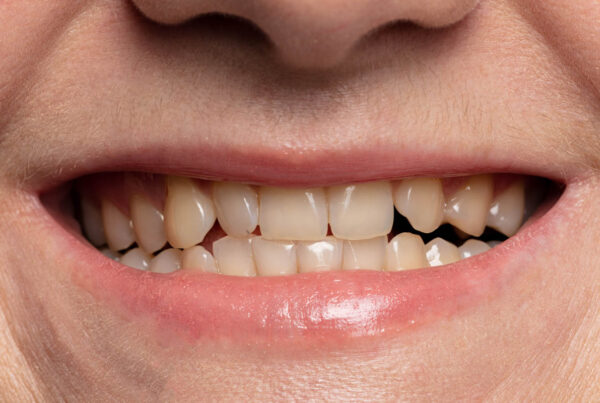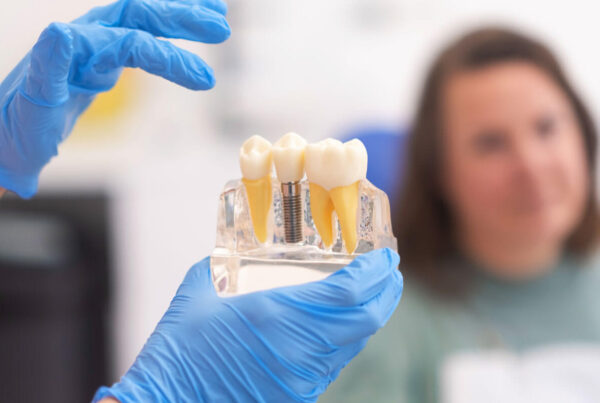 When treating tooth decay, our Philadelphia dentists want to achieve a few basic goals: remove infection, preserve as much healthy tissue as possible, and restore the patient’s smile. This generally means using the least invasive technique possible while still effectively treating all of the decay present. When cavities are too large to be fully treated by a filling but do not necessarily need a dental crown, inlays and onlays provide an appealing alternative. Moreover, they offer the strength and aesthetics of a porcelain restoration without the excessive removal of enamel that a crown requires. Refer to the below information to learn more about inlays and onlays and how they are used at our general dentistry practice.
When treating tooth decay, our Philadelphia dentists want to achieve a few basic goals: remove infection, preserve as much healthy tissue as possible, and restore the patient’s smile. This generally means using the least invasive technique possible while still effectively treating all of the decay present. When cavities are too large to be fully treated by a filling but do not necessarily need a dental crown, inlays and onlays provide an appealing alternative. Moreover, they offer the strength and aesthetics of a porcelain restoration without the excessive removal of enamel that a crown requires. Refer to the below information to learn more about inlays and onlays and how they are used at our general dentistry practice.
What Are Inlays and Onlays?
Inlays and onlays are dental restorations that are used to replace tissue that has been lost to decay. Like dental fillings, they are inserted directly into the tooth where tissue has been removed, but unlike fillings, they are created outside of the mouth from porcelain. An inlay is particularly similar to a dental filling in that it fills a cavity within the center of the tooth’s crown. By contrast, an onlay also comes up and over the cusps of a tooth, or the ridges along its occlusal surface. Other than this distinction of placement, inlays and onlays are identical in their function.
How Are Inlays and Onlays Created?
Because they are crafted from porcelain, the procedure for inlays and onlays is closer to that of a dental crown than a dental filling. Typically, this process requires two visits to complete.
During the first visit, any decay will be removed from the tooth’s cavity and the tooth will be prepared for a restoration. Once only healthy tissue remains, impressions will be taken, which will serve as the mold for the inlay or onlay. The impressions will be sent to an outside lab where the restoration will be expertly crafted. In the meantime, your tooth will be fitted with a temporarily filling in order to protect the tooth and maintain a full smile.
When you return to our office, the temporary filling will be removed and the inlay or onlay will be fitted. If the fit is perfect, the restoration will be permanently cemented into your tooth, restoring it to its full shape and integrity.
Why Get Inlays or Onlays?
In many ways, inlays and onlays are a happy medium between a regular dental filling and a dental crown. They offer the advantages of both with few drawbacks. Benefits include:
- High-quality aesthetics: Porcelain offers an extremely realistic replacement for natural tooth tissue. It is color matched to your tooth, exhibits the textural qualities of enamel, and is highly resistant to staining. Inlays and onlays are even superior to the cosmetic qualities of white composite fillings.
- Superior support: Inlays and onlays are ideal for large cavities that may not be adequately restored through a filling. Porcelain is a particularly durable material, reinforcing a tooth and strengthening it for many years to come.
- A perfect fit: With dental fillings, the dentist must manually shape the occlusal surface, only approximating the patient’s original bite pattern. Since inlays and onlays are crafted from impressions of the tooth, they can be made to replicate the tooth’s exact structure.
- Preserved tissue: If an inlay or onlay is not used, the next step may be to use a dental crown, which requires the removal of enamel in order to fit over the entire tooth. By using an inlay or onlay, patients get to preserve more of their natural, healthy tissue.
Contact Us to Learn More
Decisions regarding treatment are always best made between you and your dentist. Call or email us to learn more about any of our restorative services. We’ll be happy to address any of your questions and help you set up an appointment with one of our experienced dental professionals.



